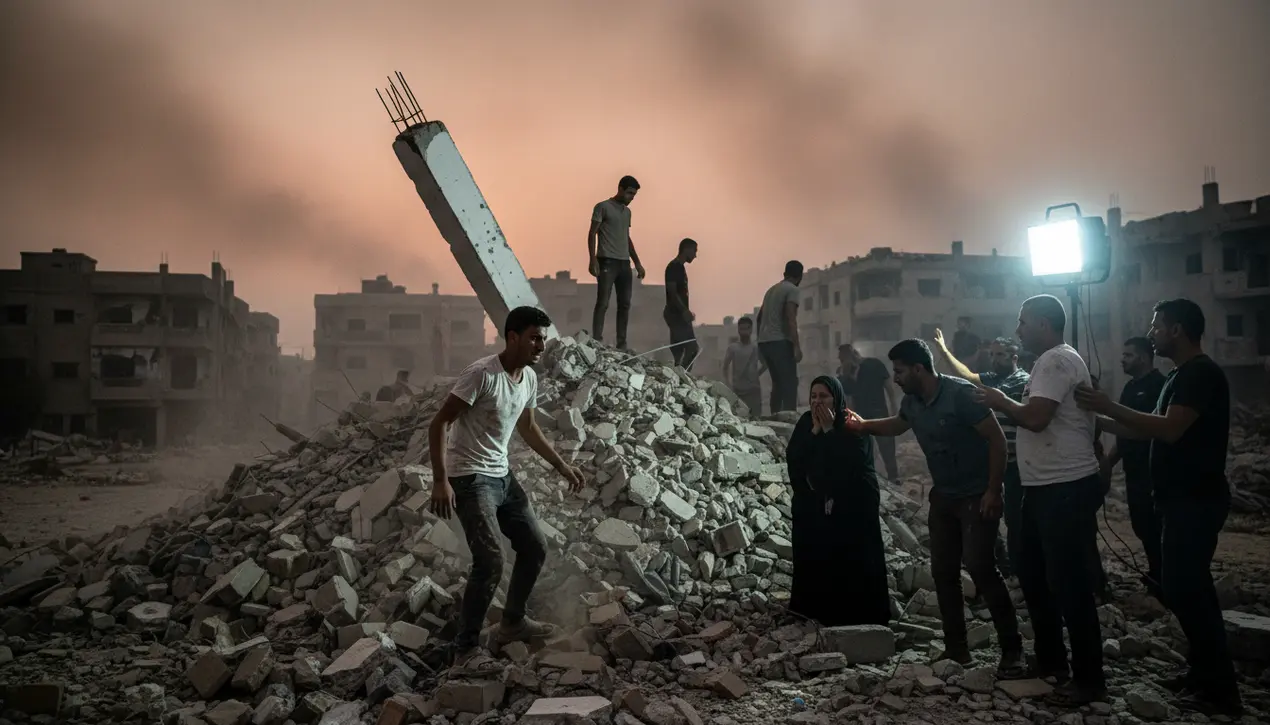
Politicsconflict & defenseMilitary Operations
Israeli Airstrikes in Gaza Kill 25 Palestinians, Says Health Ministry.
EM
Emma Wilson
2 hours ago7 min read
The fragile architecture of a five-week-old ceasefire in Gaza collapsed with devastating speed today as Israeli airstrikes hammered the enclave, killing at least twenty-five Palestinians according to the local Health Ministry, which is run by Hamas. This immediate, visceral toll—a number that represents fathers, mothers, children, their lives abruptly erased—casts a long, dark shadow over any prospects for near-term peace.The Israeli military justified the offensive, stating its forces had come under fire from Hamas gunmen in a clear violation of the truce, and that their response targeted several militant facilities. Yet, this military calculus, this tit-for-tat exchange of official statements, feels chillingly abstract when measured against the raw human cost now being tallied in Gaza's overwhelmed hospitals.The scenes are tragically familiar: first responders digging through smoldering rubble in a desperate race against time, the wails of grief from families torn apart, the stark contrast between the clinical language of 'strikes on Hamas targets' and the chaotic, bloody reality on the ground. This is not merely a breach of a temporary agreement; it is a plunge back into the cyclical violence that has defined this conflict for generations, a grim reversion to a status quo of death and retaliation that the international community has repeatedly failed to break.The timing is particularly precarious, coming amid already heightened regional tensions and stalled diplomatic efforts aimed at securing a more lasting resolution. One must ask: what strategic gain can possibly be worth this human devastation and the almost certain escalation it will provoke? Hamas will feel compelled to respond, not just militarily but through its powerful propaganda channels, leveraging images of the dead to galvanize support and paint Israel as an indiscriminate aggressor.The Israeli government, in turn, will face immense internal pressure to appear resolute and unyielding in the face of attacks on its soldiers. This creates a feedback loop of violence where each action justifies a more severe reaction, trapping civilian populations on both sides in a relentless crossfire.For the people of Gaza, already living under a crippling blockade and the scars of previous wars, these airstrikes are not a political headline but a terrifying return to a reality of sleepless nights, of wondering if the next explosion will be the last thing they hear. The international community, from Washington to regional capitals, now watches with bated breath, knowing that the already narrow path to de-escalation has become a razor's edge.The fundamental, unresolved issues—the blockade, the occupation, the refusal of groups like Hamas to recognize Israel's right to exist—remain the festering wounds beneath these sudden, violent flare-ups. Until there is a courageous, concerted push to address these core grievances, rather than merely managing their most explosive symptoms, the people of Israel and Palestine are condemned to relive this nightmare, with reporters like myself left to document the grim arithmetic of the dead, and the world left to mourn another failed opportunity for peace.
#lead focus news
#Gaza
#Israeli military
#Hamas
#ceasefire violation
#Palestinian casualties
#airstrikes
Stay Informed. Act Smarter.
Get weekly highlights, major headlines, and expert insights — then put your knowledge to work in our live prediction markets.
Comments
Loading comments...
© 2025 Outpoll Service LTD. All rights reserved.